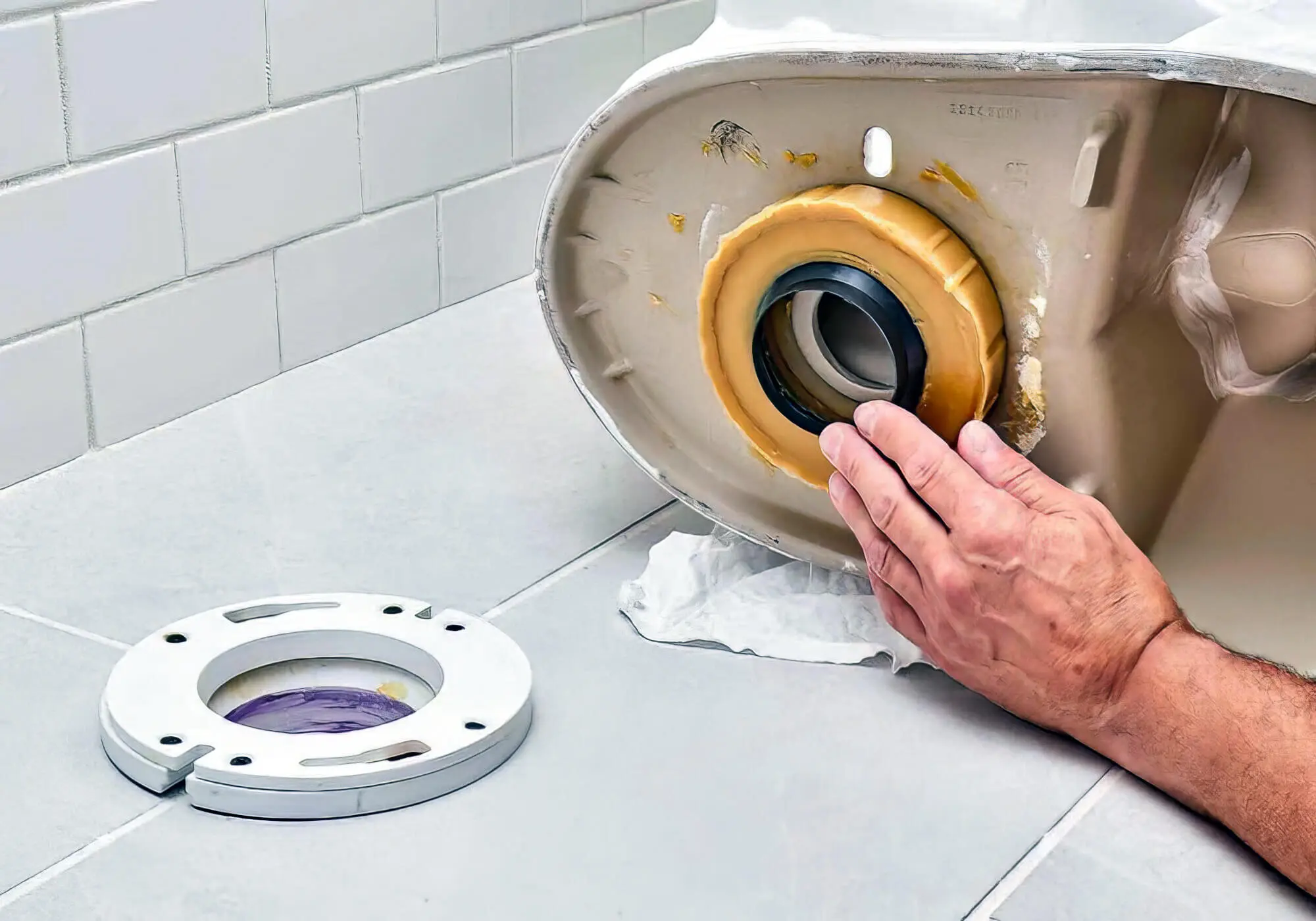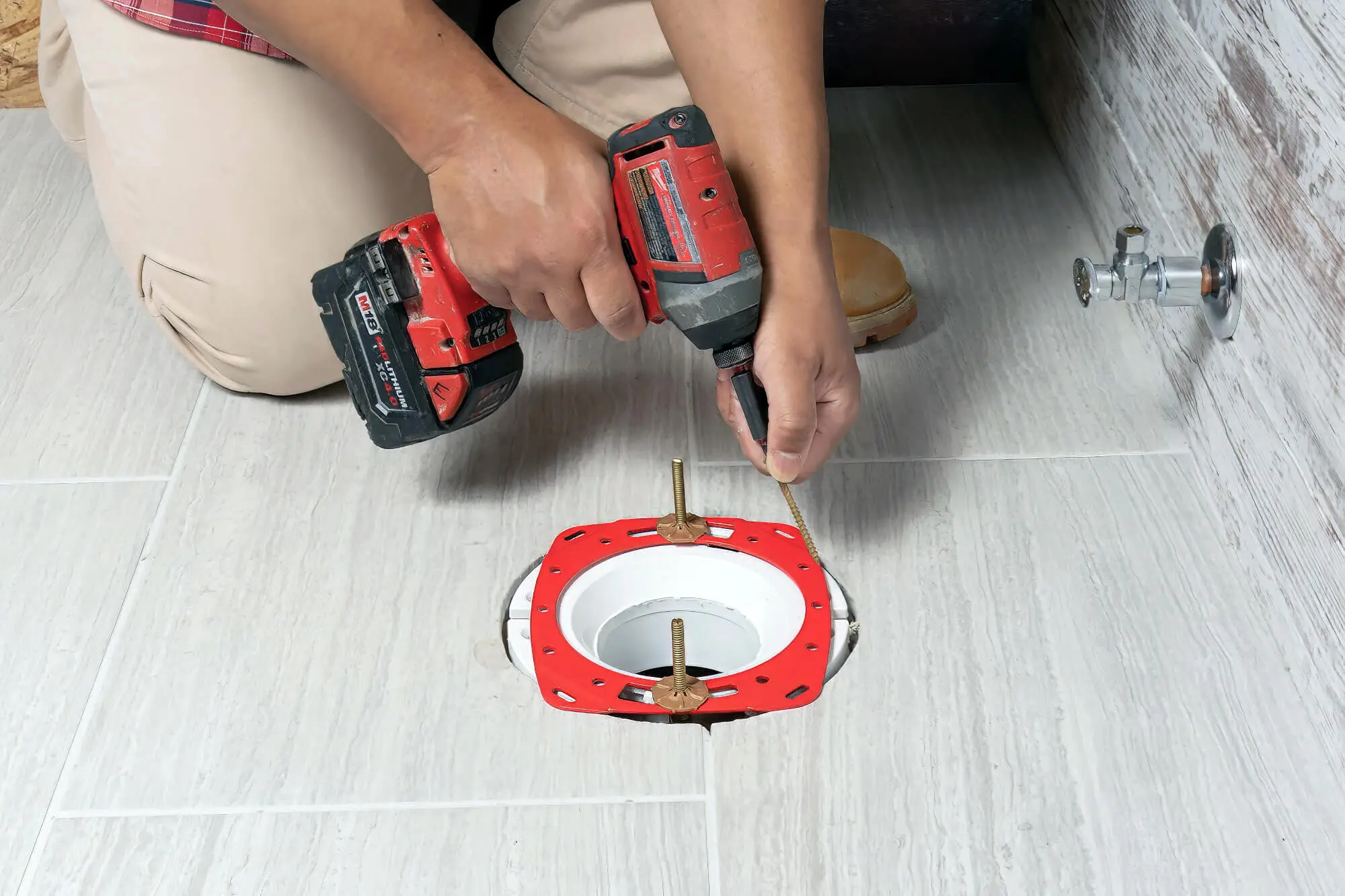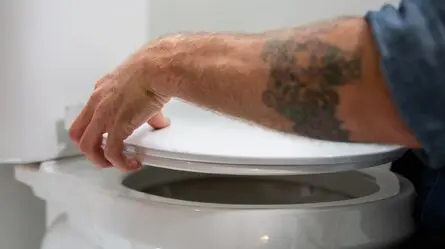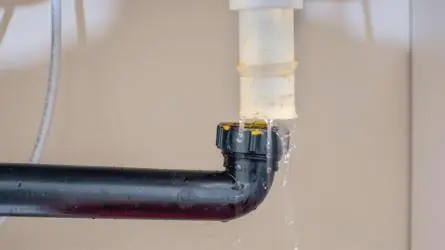Is there foul sewer odour in your toilet that never goes away, or do you see water overflowing near the base of your toilet?
In either scenario, a faulty toilet flange could be the culprit, and it’s crucial to fix or replace it promptly to prevent water damage in your home. If you’re unfamiliar with it, a toilet flange is what holds the toilet steady on the floor and ensures the drain is sealed.

But don’t stress—fixing the flange ring can be a straightforward way to avoid costly structural repairs. If you’re not sure how to tackle it and find the manufacturer’s instructions perplexing, this guide is here to help. We’ve simplified the process into easy-to-follow steps just for you.
Read on to learn how to repair or replace a toilet flange!
Signs Of Dysfunctional Toilet Flange
A broken toilet flange can cause significant damage to your plumbing system, leading to water leaks, toilet backups and whatnot. Some signs indicating your flange needs repair are:
- There’s a foul odour in your washroom
- Your toilet pot rocks back and forth when you sit on it
- There are leaks at the base of your toilet and in the subflooring
- There are loose tiles near the base of the toilet pot
A damaged toilet flange can go undetected for months. However, you must watch out for the above signs if you suspect the flange is broken. Invisible leaks can cause water to seep into your subflooring and wreak havoc in your bathroom. Therefore, regular washroom inspection can help you save thousands of dollars in the long run.
Preparing Toilet For Repair
Before you dive into fixing the toilet flange, make sure your washroom’s ready for the job. It might seem a bit daunting since it involves taking out the entire toilet seat. If you’re not too familiar with plumbing, don’t be shy about calling in a professional.
For those who are confident to do it themselves, here are the steps to follow:
1. Cover The Floor
Start by laying down some paper towels or newspapers on the bathroom floor by the toilet base. Once it’s disconnected, you’ll place the toilet bowl on them. Be sure to leave enough space for replacing the flange.
2. Shut Off The Water Supply
Next, shut off the water supply by giving the valve a 90° turn. If the water doesn’t completely stop, you might need to disconnect it further down the line, maybe near the water meter.
3. Drain The Water From The Bowl And Tank
Moving on, you must empty the toilet bowl and the tank before repairing the broken flange– so flush the toilet. Drain the remaining water with a turkey baster or wet vac if flushing doesn’t empty the two toilet parts. And since the water supply is shut, the tank won’t refill, so you need not worry about it.
4. Disconnect The Hose
The water supply hose connects the toilet tank to the shutoff valve and supplies water to the toilet. You will have to detach it at the coupler from the lower side of the tank. If you cannot loosen it by hand, use an adjustable wrench or pliers to turn the coupling until it is disconnected.

5. Lift The Toilet Seat
Next, remove the bolt covers at the toilet base to access nuts and bolts. Use adjustable pliers to loosen screws and free the toilet bowl from the flange. Once that’s done, lift the seat and place it over the towel or newspapers.
6. Block The Outflow Pipe
Lastly, you must block the exposed outflow pipeline using a cloth to prevent sewer gases from spreading into the bathroom. Gently push an old t-shirt or towel into the cast iron pipe, but not so tightly that you won’t be able to remove it later.
7. Clean And Inspect The Existing Toilet Flange
Now that you have clear access to the toilet flange opening, inspect it properly before cleaning it. But if you see any signs of damage, replacing it with a new one is best. Here’s how you can inspect the old flange:
- Use a putty knife to scrape off the existing toilet wax ring and remove all the old wax
- If your existing flange is made of PVC and sealed with a gasket or silicone sealant, wash it properly after taking it off
- If you have a cast iron flange, call professionals for inspections
How To Repair Toilet Flange
Once you prepped up the toilet, you can repair or replace the new toilet flange. You can do it by following these five simple steps:
1. Insert The Repair Ring
Once you’ve taken out the damaged flange sections, apply a good amount of silicone sealant. Then, slot the bolts into place and fit the repair ring correctly for proper alignment—having solvent cement ready might be wise. Don’t forget to wipe off any extra silicone and allow adequate time for it to set.
2. Fit The Repaired Or New Flange Into The Drain Pipe
Push the flange through the supply hose so its lip rests snugly on the floor while its neck slides flush into the outflow pipe. Ensure the correct bolt alignment, with one at 3 o’clock and the other at 9 o’clock. Note that the neck of the flange should have a rubber gasket to form a seal against the interior of the outflow pipe.
3. Tighten The Screws
Drive closet bolts through the lip of the flange and secure them into the existing holes on the bathroom floor using a screwdriver. You can create new pilot holes in the floor if the current ring slots are too large or too small for new screws.

4. Unplug The Outflow Pipe
The repair work is pretty much done, so pick up any spare pieces of the old wax ring, flange repair ring, loose washers or screws before unplugging the outflow pipe. Once the area is clear, remove the towel you used to obstruct the pipeline.
5. Adjust The Wax Ring
Tilt the toilet bowl and adjust the new wax ring into the right place by pressing the bulging side of the ring over the pipe stub. Apply pressure on all sides of the repair ring, but push it gently to avoid deforming.
6. Reinstall The Toilet
After adjusting the repair ring, it’s time to reinstall the toilet in its place. Set the seat straight onto the top flange, aligning its holes with the bolts on the floor. Once you place it in the correct position, fasten the closet bolts clockwise, connect the water supply hose, and you’re done! Test your toilet to ensure it is installed correctly.
Toilet Flange Is Now Repaired!
Repairing a toilet flange can look like a daunting task for those who don’t have any experience. If you are one of those, contact Woolf Plumbing Ellenbrook, whose licensed plumbers can easily pull off plumbing-related tasks. As such, our licensed and professional plumbers are experienced in repairing broken toilet flanges.
But fixing toilet flange won’t be much of a task for seasoned DIYers. So, give our step-by-step procedure a shot if your flange is broken. If the flange seems beyond repair, you can buy a new one from a hardware store.
That’s it for today. Until next time!




